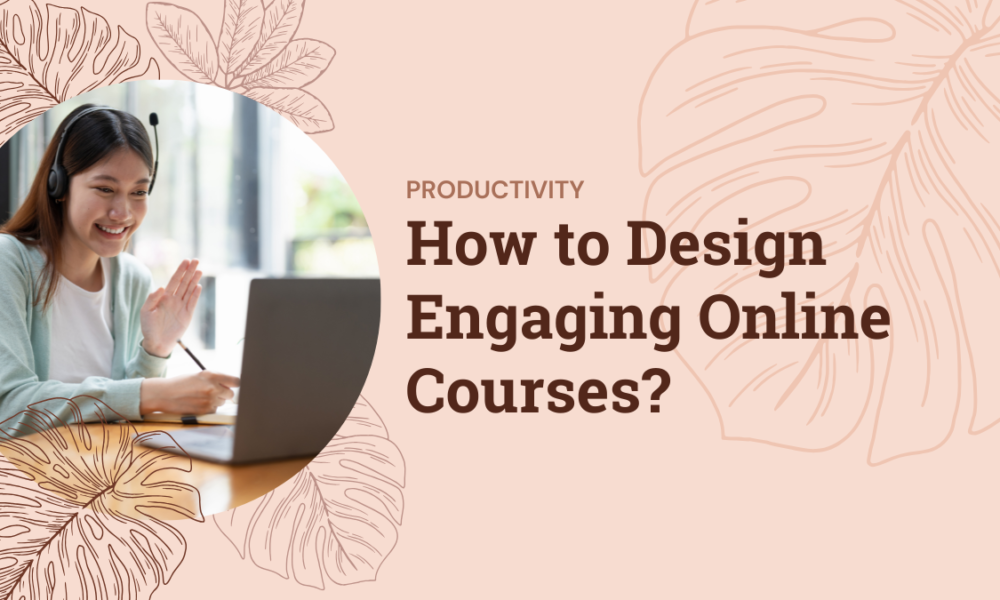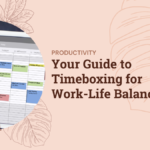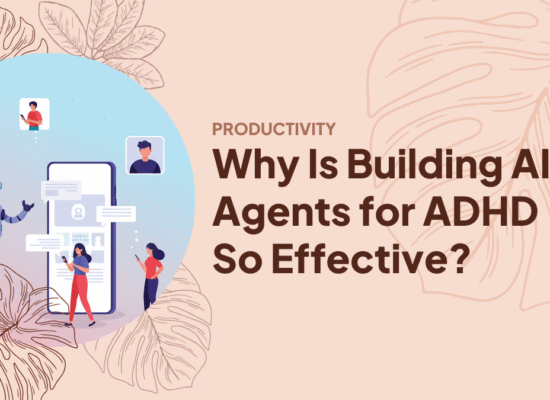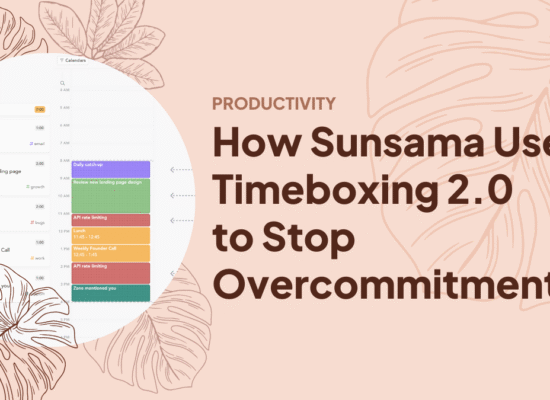Table of Contents
- Understanding Your Learners' Needs
- Planning Your Course Structure: The Foundation of Engagement
- Crafting Visual Elements That Captivate Learners
- Building Interactive Elements with LearnWorlds
- Creating Your Course Learning Environment
- Crafting Compelling Content: Beyond the Basics
- Leveraging Professional Design Without the Hassle
- Conclusion: Taking Your Course From Good to Unforgettable
Design engaging online courses requires careful planning and strategic thinking from the very beginning. With the explosive growth of online education—accelerating even faster since 2020—educators and content creators have unprecedented opportunities to reach learners worldwide. According to research, the global e-learning market is projected to reach $375 billion by 2026, showing just how vast this landscape has become.
However, with great opportunity comes significant challenges. Many online courses suffer from dismal completion rates—often below 15%—because they fail to engage students meaningfully. Common pitfalls include overwhelming content dumps, lack of interactive elements, unclear navigation, and failure to understand learner motivations.
Thoughtful course design creates memorable learning experiences by balancing content delivery with engagement strategies. When designed well, online courses can be transformative, building skills while keeping students motivated through completion. Research shows that courses with clear structure, multimedia elements, and regular interaction significantly outperform traditional lecture-style offerings.
In this guide, we’ll explore practical strategies to create courses people actually finish—from understanding your audience to implementing interactive elements that spark curiosity and maintain engagement. You’ll learn actionable techniques based on learning science that will help your courses stand out in an increasingly crowded marketplace.
Understanding Your Learners' Needs
Starting with your audience is essential for course success—it’s the foundation upon which everything else builds. Without understanding who you’re teaching, you risk creating content that fails to resonate or address real needs.
Creating Learner Personas
Developing detailed learner personas helps guide your design decisions throughout the creation process. These fictional representations of your ideal students should include:
- Demographic information: Age range, education level, professional background
- Motivation factors: Why they’re taking your course (career advancement, personal interest, required learning)
- Technical competence: Comfort with technology and online learning environments
- Available time: How much time they can realistically commit to learning
- Learning preferences: Visual, auditory, reading/writing, or kinesthetic preferences
Online instructors and instructional designers should value student engagement in online courses. The first two weeks of an online course are critical; students start to familiarize themselves with the courses and connect with instructors, classmates, and content.
—Gaspard Mucundanyi
Identifying Pain Points and Preferences

Understanding common challenges your learners face helps you address them proactively. Consider:
- What obstacles might prevent successful completion?
- Where do students typically struggle with this subject matter?
- What misconceptions or knowledge gaps might they have?
- What previous learning experiences might color their expectations?
The goal of any learning program is to connect with your audience, but it’s difficult to connect with anyone if you know nothing about them.
—Christopher Pappas
Taking time to analyze your audience and understand their characteristics, habits, and learning behaviors is crucial for developing engaging courses.
Gathering Feedback Strategically
Effective course designers don’t guess what learners need—they ask! Consider these feedback-gathering approaches:
- Pre-course surveys: Send questionnaires to potential learners about their expectations and needs
- Interviews with target learners: Conduct informal conversations with representatives of your target audience
- Industry expert consultations: Speak with professionals who understand workforce needs
- Competitive analysis: Review similar courses to identify gaps and opportunities
Quick Exercise: Creating Your Ideal Student Profile
Take 15 minutes to sketch your ideal student profile by answering these questions:
- What specific problem is this person trying to solve by taking your course?
- What prior knowledge or experience do they bring to the learning environment?
- What specific outcomes would make them consider the course successful?
- What might cause them to abandon the course before completion?
- How will this course fit into their daily life and schedule?
Understanding these aspects of your learners helps you create courses that feel personalized and relevant. As research in online education consistently shows, students are more likely to engage with and complete courses they perceive as directly applicable to their needs and goals.
Remember that your course should evolve based on ongoing feedback. The most engaging online education experiences incorporate learner input throughout the design and delivery process, creating a dynamic learning environment that responds to student needs.
Planning Your Course Structure: The Foundation of Engagement
To design engaging online courses, you need to start with a thoughtfully planned structure. The architecture of your course directly impacts student motivation, completion rates, and overall satisfaction. Let’s explore how to create a framework that keeps learners invested from start to finish.

Creating a Logical Course Progression That Builds Confidence
Learning happens best when content builds sequentially, with each new concept supported by previous knowledge. Structure your course like climbing a ladder—each step should feel achievable while moving learners toward mastery. Research from the eLearning Industry shows that properly sequenced content can improve knowledge retention by up to 60%.
Begin with foundational concepts before introducing more complex ideas. For example, if teaching photography, start with basic camera operations before diving into advanced lighting techniques. This progressive approach creates what psychologists call the “flow state,” where learners feel challenged but capable.
Determining the Ideal Module Length for Your Subject
When deciding on module length, consider both your subject and modern attention spans. According to research cited in the microlearning guide, “While traditional learning methods focus on comprehensive coverage over extended periods, microlearning offers bite-sized training that fits seamlessly into the busy lives of modern learners.”
For technical or complex topics, aim for 10-15 minute segments followed by practice opportunities. For conceptual subjects, you might extend to 20–25 minutes, but always break longer sessions into digestible chunks. Remember that online learners report significant drop-offs in attention after 25 minutes of continuous instruction.
When to Use Micro-learning vs. Deep-dive Approaches
The choice between micro-learning and deep-dive content depends on your learning objectives and audience needs:
Micro-learning works best for:
- Skills requiring frequent reinforcement
- Quick reference information
- Mobile-first audiences
- Compliance training
- Busy professionals with limited time
Deep-dive approaches are better suited for:
- Complex conceptual topics
- Interconnected ideas requiring synthesis
- Professional certification preparation
- Topics where nuance matters
- Building comprehensive understanding
Many successful course creators employ a hybrid approach—using micro-learning modules for basic concepts and skills, then incorporating deeper explorations for critical areas. As noted in the microlearning article, “Each module has a single learning objective, which makes the learning process efficient and targeted.”
The Psychology Behind "Small Wins" in Maintaining Motivation

The concept of “small wins” directly impacts course completion rates. Breaking your course into achievable milestones creates momentum through what psychologists call the “endowed progress effect”—when people feel they’ve made progress toward a goal, they become more committed to completing it.
Design your course to provide regular accomplishment markers like:
- Completion certificates for modules
- Progress bars showing advancement
- Badges for skill mastery
- Celebratory messages at key milestones
- Unlocking of new content or capabilities
These small victories trigger dopamine release, creating positive reinforcement loops that maintain engagement. Research shows courses using progressive achievement markers see up to 30% higher completion rates.
How to Balance Theory and Practical Application
The most engaging online courses balance conceptual understanding with hands-on practice. The ideal ratio varies by subject, but aim for approximately 40% theory to 60% application for most topics. This approach satisfies different learning preferences while reinforcing retention.
For each theoretical concept, include:
- A practical exercise applying the knowledge
- Real-world examples showing the concept in action
- Problem-solving opportunities
- Creation/demonstration requirements
- Reflection prompts connecting theory to practice
This balance prevents the common online education pitfall of presenting information without application context, which often leads to disengagement.
Crafting Visual Elements That Captivate Learners
Visual design dramatically impacts how students engage with your online course content. Understanding the science behind visual processing allows you to create materials that not only look professional, but actively enhance learning.

The Science Behind Visual Processing and Information Retention
Our brains process visuals 60,000 times faster than text, making strong visual elements crucial for online learning efficiency. When designing course materials, remember these cognitive principles:
- Dual coding theory: Information presented in both visual and verbal formats creates two memory pathways, significantly improving recall
- Cognitive load theory: Well-designed visuals reduce mental processing requirements, leaving more cognitive resources for actual learning
- Picture superiority effect: Concepts accompanied by relevant images are remembered 65% better than text-only information
Essential Visual Elements Every Course Needs
Every engaging online course should incorporate these visual components:
- Consistent branding elements (colors, fonts, logo) that create visual coherence
- Instructional graphics explaining complex concepts
- High-quality photographs demonstrating real-world applications
- Infographics summarizing important information
- Video segments for demonstrations and explanations
- Interactive diagrams when appropriate for the subject
- Visual cues highlighting important information
- White space to prevent visual overwhelm
The key is maintaining visual consistency while using variety to maintain interest. Remember that visual elements should enhance understanding, not distract from core content.
Using Design Subscription Services for Professional-Quality Materials
Professional-looking visual elements signal course quality and professionalism. Design subscription services provide access to:
- Professionally designed templates
- Extensive icon libraries
- High-quality stock photography
- Custom illustration capabilities
- Animation tools
- Infographic makers
These resources allow course creators to produce polished materials without specialized design skills. Many platforms offer education-specific template libraries with assets specifically designed for online learning environments.
Design Principles Anyone Can Apply
Even without formal design training, you can create visually appealing course materials by following these principles:
- Consistency: Use the same color palette, fonts, and visual style throughout
- Contrast: Ensure text is easily readable against backgrounds
- Hierarchy: Make important elements visually prominent
- Alignment: Keep elements properly aligned for a clean appearance
- Simplicity: Avoid cluttered slides/pages that overwhelm learners
- Purposeful color: Use color psychology to evoke appropriate emotions
- Negative space: Include breathing room around content elements
Remember that effective design isn’t about decoration—it’s about enhancing comprehension.
Building Interactive Elements with LearnWorlds

Interactivity transforms passive viewers into active participants. LearnWorlds provides powerful tools to create engaging experiences that boost knowledge retention and course completion rates.
LearnWorlds distinguishes itself through its robust interactive features that support various learning styles and engagement strategies. The platform allows you to create:
- Interactive videos with embedded questions and notes
- Gamified learning paths with achievement systems
- Social learning communities with discussion boards
- Customizable assessments with immediate feedback
- E-book creation with interactive elements
- Certification systems with verification
These capabilities align with research showing that interactive elements can increase engagement by up to 50% compared to passive content consumption.
Incorporating interactivity into your learning programs is an important factor in helping learners be interested in what they’re learning, and stay focused as they progress through the course.
—Christopher Pappas
Step-by-Step Guide to Creating Engaging Elements

Creating Effective Quizzes and Knowledge Checks
- Determine quiz purpose: Decide if you’re testing recall, application, or analysis
- Select appropriate question types:
- Multiple choice for basic recall
- Scenario-based questions for application
- Matching for relationships between concepts
- Fill-in-the-blank for terminology mastery
- Write clear questions avoiding ambiguity or trick wording
- Provide meaningful feedback for both correct and incorrect answers
- Incorporate visual elements when relevant to the question
- Use LearnWorlds’ branching logic to adapt based on responses
- Set appropriate difficulty progression throughout the course
Knowledge checks are most effective when distributed throughout content (every 5-7 minutes) rather than just at module ends.
Developing Interactive Video Experiences
- Upload your video to the LearnWorlds platform
- Add interaction points at strategic moments:
- Questions testing comprehension
- Additional information pop-ups
- Navigation points to related content
- Reflection prompts
- Include timestamps for key concepts
- Enable note-taking capabilities alongside video
- Add closed captions for accessibility
- Create bookmarking functionality for easy reference
- Link to supplementary resources at relevant points
Interactive video dramatically outperforms passive video, with studies showing 90% higher completion rates and 280% longer engagement times.
Crafting Discussion Prompts That Foster Community
- Create open-ended questions that invite multiple perspectives
- Relate prompts to real-world applications of course concepts
- Encourage learners to share personal experiences
- Design prompts requiring critical thinking rather than simple recall
- Use LearnWorlds’ tagging features to organize discussion themes
- Schedule regular instructor participation to model quality responses
- Implement peer response requirements to build community
Effective discussion prompts transform individual learning into collaborative knowledge construction, leveraging the social aspects of learning theory.
Balancing Tech Features with Learning Objectives
While LearnWorlds offers impressive technological capabilities, always prioritize learning objectives over flashy features. For each interactive element, ask:
- Does this support my core learning objectives?
- Will this enhance or distract from content understanding?
- Does this address different learning preferences?
- Is the technology barrier appropriate for my audience?
- Does this interaction promote deeper processing?
Remember that technology should serve pedagogy, not the reverse. As one design expert notes, “The best course of action is to break your content up into short sections, provide quick exercises, and, if you are using presentations, remember not to overload your screens with text.”
Creating Your Course Learning Environment
To design engaging online courses, your learning environment must be intuitive, welcoming, and purposeful. The digital space where learning happens significantly impacts student retention and satisfaction.
Customizing Your LearnWorlds Interface for Optimal Engagement
LearnWorlds offers extensive customization options that can transform a generic course into an immersive learning journey. Begin by personalizing your course player—the interface students interact with most. Adjust colors to match your brand, customize navigation buttons, and select layouts that complement your content type.
Research indicates that learners spend 25-30% more time in environments they find visually appealing. In LearnWorlds, prioritize:
- Custom welcome messages that greet students by name
- Progress indicators that provide motivational feedback
- Achievement badges that appear at strategic learning milestones
- Personalized course paths based on assessment results
Remember that customization should enhance, not distract from, learning. As microlearning expert Ian Cook notes, “The modern learner (especially in companies) will demand more flexible and efficient ways to absorb knowledge.”
Setting Up Community Spaces That Enhance Learning

Learning doesn’t happen in isolation. Create dedicated discussion spaces within your course to foster peer connections and collaborative problem-solving.
LearnWorlds’ community features allow you to:
- Create topic-specific discussion boards for each module
- Establish study groups based on learning pace or interests
- Schedule synchronous “office hours” or Q&A sessions
- Design collaborative assignments requiring peer interaction
Research from the International Journal of Education and Development shows that “online students engage in learning when interacting with their classmates, content, and instructors.” Structure your community spaces to encourage all three types of interaction.
Navigation Design Principles That Reduce Cognitive Load
Cognitive overload is the enemy of engagement. When students struggle to find materials or understand where they are in the course, valuable mental energy is wasted.
Implement these navigation principles:
- Maintain consistent placement of menus and action buttons
- Use breadcrumb navigation to show location within the course
- Limit menu options to 5–7 items to prevent choice paralysis
- Create visual hierarchy with color and size to indicate importance
- Provide multiple pathways to important resources
Accessibility Considerations for Diverse Learners
An engaging course must be accessible to all learners. LearnWorlds supports various accessibility features that ensure your content reaches diverse audiences:
- Provide closed captioning for all video content
- Ensure proper color contrast for text visibility (4.5:1 ratio minimum)
- Structure content with proper headings for screen readers
- Offer text alternatives for all images and multimedia
- Support keyboard navigation for motor-impaired learners
Regular accessibility audits help identify potential barriers. Remember that accessibility features often benefit all learners—captioning, for example, improves comprehension for everyone, not just hearing-impaired students.
How to Create a Consistent Visual Identity Throughout Your Course
Visual consistency creates a professional impression and helps students focus on content rather than adjusting to changing interfaces. Create a style guide that includes:
- Primary and secondary color palette (3-5 colors maximum)
- Typography selections (2-3 complementary fonts)
- Icon style (outline vs. filled, rounded vs. angular)
- Background textures or patterns
- Header and section break styling
Apply these elements consistently across all course materials, from the welcome page to downloadable resources. LearnWorlds’ templating system allows you to create and save custom styles for various content types, ensuring consistency without repetitive work.
Crafting Compelling Content: Beyond the Basics
To design engaging online courses that truly captivate learners, you need content strategies that go beyond information delivery.
Storytelling Techniques That Enhance Retention
Stories increase information retention by 65-70% compared to facts alone. Incorporate these techniques:
- Create relatable protagonists facing similar challenges as your learners
- Structure lessons as “hero’s journeys” with obstacles to overcome
- Use case studies demonstrating real-world application
- Position yourself as the mentor in the student’s learning journey
Using The "Curiosity Gap" to Maintain Interest
Leverage the space between what learners know and want to know by:
- Opening lessons with intriguing questions
- Previewing upcoming content with “cliffhanger” statements
- Revealing information progressively
- Using provocative statistics or counterintuitive statements
Creating Emotional Connections with Your Material
Content that evokes emotions is remembered longer. Build connections by:
- Sharing authentic personal stories related to the material
- Including testimonials from successful learners
- Creating scenarios that evoke empathy or recognition
- Acknowledging common frustrations with the subject
Using Humor Appropriately and Balancing Information with Inspiration
Effective humor reduces stress and builds rapport. For balance:
- Keep humor relevant to subject matter and culturally appropriate
- Blend practical information (what/how) with inspirational elements (why/what’s possible)
- Include both logical content and emotional motivation in each module
- Use humor as seasoning, not the main ingredient
Leveraging Professional Design Without the Hassle

Rather than struggling with design software or hiring freelancers, unlimited design services provide:
- Professional-quality visuals without specialized skills
- Quick turnaround times (typically 1–2 days)
- Consistent quality across all course elements
- Unlimited revisions until satisfaction
- Scalable design capacity
Plus, design services that enhance course quality:
- Custom illustrations and infographics transform complex concepts into memorable visuals, boosting retention from 10% to 65% when paired with information.
- Professional slide decks with consistent styling, balanced layouts, and proper visual hierarchy improve comprehension by 43%.
- Custom worksheets and printables extend learning through application opportunities, bridging the gap between knowledge and implementation.
- Course thumbnails and marketing materials with professional design can increase conversion rates by up to 200%.
Conclusion: Taking Your Course From Good to Unforgettable
To design engaging online courses that truly stand out, integrate thoughtful planning, student-centered experiences, and consistent execution. Focus on creating clear learning pathways, visually cohesive interfaces, compelling content, and meaningful interaction opportunities. Remember that engagement isn’t about flashy features—it’s about creating an environment where learning feels natural and rewarding.
Start by auditing your existing materials, implementing scalable design systems for consistency, and making incremental improvements based on real learner feedback. The most successful course creators aren’t necessarily design experts; they’re educators who deeply understand their audience and continuously refine their approach. By thoughtfully balancing your teaching strengths with professional design support, you’ll create learning experiences that don’t just transfer knowledge—they transform lives.
Transform Your Knowledge into a Profitable Online Course!
Maria is an accomplished digital marketing professional, specializing in content marketing and SEO. She's a neurodivergent who strives to raise awareness, and overcome the stigma that envelopes around mental health.







No Comment! Be the first one.